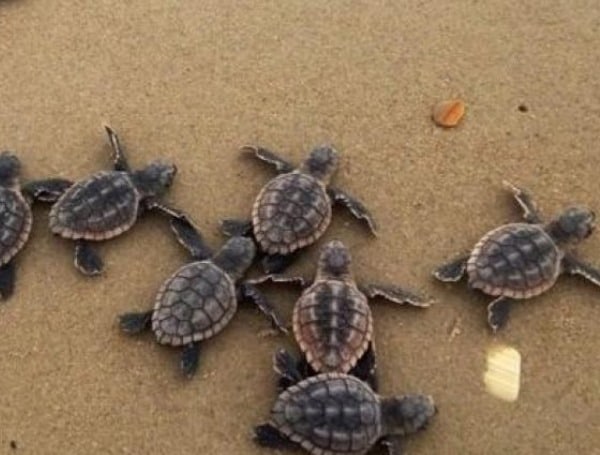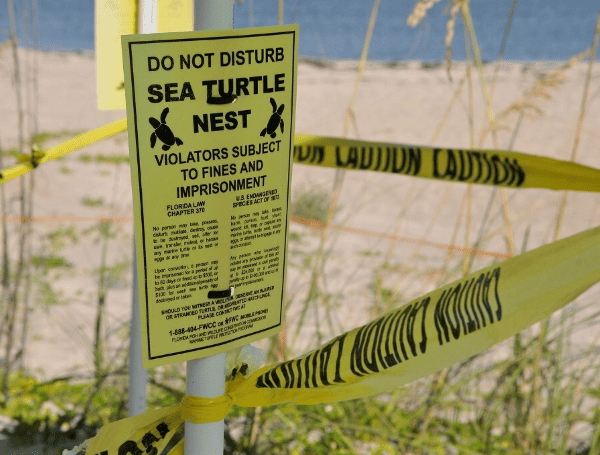As sea turtle nesting season begins along Florida’s beaches, the Florida Fish and Wildlife Conservation Commission (FWC) is calling on residents and visitors to take proactive steps to ensure the successful nesting and hatching of these protected marine animals.
Nesting season typically starts in March along Florida’s southeast Atlantic coast, from Brevard County south to Broward County, and in April or May on the Gulf Coast and north Florida beaches. Florida’s shorelines are crucial nesting habitats for several threatened and endangered sea turtle species, making public participation vital to their conservation.
READ: FWC To Hold Public Meeting On Potential Black Bear Hunting In Florida
The FWC is emphasizing three key actions to protect nesting sea turtles and their hatchlings: “Lights Out,” “Admire From Afar,” and “Clear the Way at the End of the Day.”
Lights Out: Artificial lighting can disorient sea turtles and hatchlings, leading them away from the ocean and into danger. Beachgoers are advised to use natural starlight at night and avoid flashlights and cellphones. Coastal residents and visitors should turn off unnecessary outdoor lights, close curtains, and ensure any remaining lights are long, low, and shielded.
Admire From Afar: While observing sea turtles can be a memorable experience, it’s essential to maintain a distance of at least 50 feet. Approaching too closely can disturb nesting females and cause them to abandon their nests. Remember, it is illegal to harm or disturb sea turtles, their nests, eggs, or hatchlings.
READ: UF/IFAS Scientists Develop Method For Detecting DNA Of Invasive Snakes In Florida
Clear the Way at the End of the Day: Female sea turtles need clear paths to reach suitable nesting sites. Obstacles like trash, holes in the sand, and beach furniture can hinder their progress and trap hatchlings. Food scraps attract predators, posing a threat to young turtles.
Beachgoers are urged to properly dispose of trash, fill in holes, and remove all beach gear before sunset. Fishing line is especially dangerous to marine life and should be disposed of responsibly. For monofilament recycling stations, visit mrrp.myfwc.com.
By following these guidelines, Floridians and visitors can play a crucial role in protecting these magnificent creatures and ensuring their successful nesting season.
Please make a small donation to the Tampa Free Press to help sustain independent journalism. Your contribution enables us to continue delivering high-quality, local, and national news coverage.
Connect with us: Follow the Tampa Free Press on Facebook and Twitter for breaking news and updates.
Sign up: Subscribe to our free newsletter for a curated selection of top stories delivered straight to your inbox.

